 |
Rheology BulletinVol. 73, No. 2 (July 2004)Faith A. Morrison, Editor |
 |
Rheology BulletinVol. 73, No. 2 (July 2004)Faith A. Morrison, Editor |
[Rheology Bulletin Home Page][Recent Issues]
Contents
Executive Committee - 2003-2005
Standing Committees
Chris Macosko Named 2004 Bingham Medalist
Profile Contributed by Frank S. Bates Chris Macosko has been running his entire life. Born in Connecticut in 1944, his family moved to Berea, Ohio just outside Cleveland, when he was three years old. At Berea High School Chris excelled in academics, but his fondest memories derive from chasing people, as captain of the cross-country team, and as a member of the outdoor four-by-one mile relay team that set a school record that still stands today. Perhaps anticipating a tenacity that would serve the rheology community later in his career, Chris once completed, and won, a track event with a broken leg! In April 2004 Macosko was inducted into the Berea High School Hall of Fame. Prior to matriculating at Carnegie Mellon University, Chris spent part of 1962 as an exchange student in West Berlin, experiencing a unique glimpse of world affairs at a critical juncture in the twentieth century. Along with more running (as captain of the track team, he once won the individual mile and took second in the half mile in a single meet) and a full slate of classes, Chris found time to write for “Steel Magazine”. His interviews with scientists and engineers around Pittsburgh in the mid-1960's drove him into the lab, and planted the seeds of an impending career in softer materials. After graduating with a chemical engineering degree from CMU in 1966, Chris attended Imperial College in London, and completed a master's degree under the supervision of Ken Weale. His project, high pressure polymerization kinetics, provided his initial exposure to polymer science and engineering. Upon returning to the U.S., Chris married Kathleen and entered the graduate program at Princeton in the fall of 1967. While working under the tutelage of Bryce Maxwell, Macosko and fellow graduate student Joe Starita conceived the ideas that culminated in the development of a new, less compliant rheometer. The subsequent evolution of the Rheometrics Company (now part of TA Instruments) in the early 1970’s represents one of the pivotal developments in the field of rheology. Chris graduated with a Ph.D. in chemical engineering in 1970, perhaps overshadowed by honorary degree recipients Bob Dylan and Coretta King.
Pushed by mentor Leon Lapidus at Princeton, and pulled by Skip Scriven, Macosko accepted a faculty position at the University of Minnesota, the living dowry extracted by Neal Amundson from the university administration for agreeing to expand the chemical engineering program to include materials science and engineering. This gamble has paid sizable dividends. Chris spearheaded an interdisciplinary polymer program that drew Matt Tirrell (1977), me (1989), and Dave Morse (1997) to the department, while embracing chemistry faculty Stephen Prager, Wilmer Miller, Tim Lodge (1982), and Marc Hillmyer (1997).
Since joining Minnesota, Macosko has distinguished himself as a terrific teacher and a leading scholar in the field of polymer science and engineering. His work addresses complex problems that couple reaction kinetics and the development of molecular architecture to multiphase morphology, flow, and mechanical and other physical properties. Throughout his career, rheology has played a central role: examples include the characterization of network formation during gelation, elasticity of foams, interfacial area generation in reactive blends, and the viscoelastic character of composites. After a highly productive lifetime on the run, my colleague Chris Macosko has now been recognized for professional activities centered on long time scales and slow recovery. End of An Era: Mort Denn Steps Down as JOR Editor
Denn came to the JoR with extensive editorial experience, having served as editor of the AIChE Journal from 1985 - 1991. Under his leadership the median time to publication for manuscripts received by the JoR was 218 days (about 7 months). Such timeliness is a credit to the diligence of the editor. As editor Denn oversaw the management of the JoR paper award, which is not a “best paper” award, as Denn frequently points out, but an award for an outstanding paper among “many fine papers [received] each year, any one of which would be deserving of this recognition.” Denn has maintained the high quality of the journal throughout his tenure as editor. “JoR has the highest ISI Impact Factor of any research journal in the entire field of mechanics,” he notes. As editor Denn also serves on the SOR Executive Committee. “The Society and the field of rheology as a whole have benefited enormously from Mort's ten years of service as Editor of the Journal of Rheology,” says SOR President Susan Muller. “His advice and counsel as a member of the Executive Committee have been invaluable and will be sorely missed.” Working with Denn since 1996 as Editorial Assistant has been Elizabeth Frey. Frey’s work on the Journal began when Denn was at UC Berkeley and continued after Denn’s move to the Levich Institute in 1999. Frey’s long service on the Journal provided continuity that was important for the smooth functioning of the Journal. “I asked her to continue when I moved from Berkeley because I could not imagine anyone else who could do the job as well, as our authors and reviewers appreciate,” notes Denn. Frey retired from UC Berkeley in 2004 but will continue to work with Denn on the Journal through July 2005. The SOR Executive Committee has appointed a committee to oversee the search for a new editor. The new editor will serve as interim editor until the 2005 election. Kurt Wissbrun leads the editor search committee which, in his words, “will endeavor to find a successor to Mort with the characteristics of Mort and his predecessors in the position - someone with the technical standing to command the respect of our community, with the dedication and diligence to execute the duties of the job, and with the vision to guide the Society in meeting the challenges of the changing technical and publishing landscape.” Biofluid RheologyClinical Hemorheology / Biorheology The International Society for Clinical Hemorheology
Oguz K. Baskurt
|
|||||||||||||||||||||||||||||||||||||||||||||||||||||||||||||||||||||||||||||||||||||||||||||||||||||||||||||||||
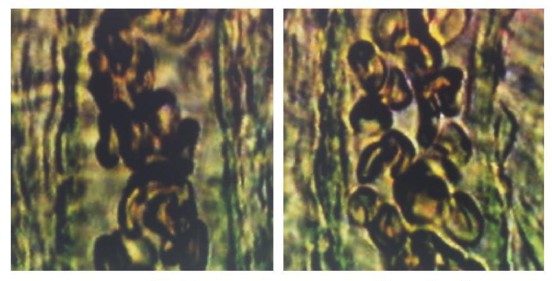 |
|
Normal red cells (left) and artificial hardened cells (right) show an effect of velocity profile as they are transported through a micro vessel. Photo courtesy of G. B. Nash. |
The International Society for Clinical Hemorheology (ISCH) was founded in 1993 in Vienna, Austria during the 1st International and 8th European Congress of Clinical Hemorheology. The purpose of ISCH is to advance and disseminate knowledge of the discipline of clinical hemorheology, and the application of this discipline to human welfare. The society organizes conferences and workshops on all aspects of clinical hemorheology, establishes committees to work on special topics related to clinical hemorheology, encourages scientists working in this area by award programs, and facilitates the exchange of ideas and information between clinical and basic scientists.
In order to more effectively carry out its mission, the ISCH has jointly organized its international conferences with the International Society of Biorheology (ISB): the next joint meeting is scheduled for Chongqing, China in 2005. The ISB has a more basic science focus, and thus the joint ISCH-ISB conferences offer a rich environment for the exchange of ideas and for establishing cooperative efforts between basic science and clinical investigators. ISCH also organizes symposia at various scientific meetings in order to promote the discipline, and provides travel support for young scientists, especially from countries with less favorable economies, to enable their participation in its meetings.
“Biorheology” is taken to mean the study of the deformation and flow of biological materials. Although much work in this field has centered on the properties of blood and blood vessels, other fluids (such as mucus and synovial fluid) or tissues (such as skin and bone) have been the subjects of biophysical analysis. Historically, some of the earliest studies of flow were motivated by an interest in biology. In 1835, the great French physician and scientist Jean-Leonard Marie Poiseuille (1797-1869) described in vivo observations on blood flow in “Recherches sur les causes du movement du sang dans les vaisseaux capillaires.” His work with capillary vessels led him to conduct further experiments in glass tubes of very small diameter and, of course, to arrive at the relationship now known as the Poiseuille (or Hagen-Poiseuille) Law.
The term biorheology was first introduced by the late Alfred L. (Al) Copley in 1948 at the 1st International Congress of Rheology, to describe the science underlying studies at the interface between biology and rheology. With George Scott Blair, he initiated a conference on the flow properties of blood and other biological systems in Oxford (1958) and a symposium on biorheology at the 4th International Congress of Rheology (1964). With the help of Robert Maxwell at Pergamon Press, Copley and Scott Blair started the journal Biorheology, now in its 41st year of publication. Copley also established in 1966 the International Society of Hemorheology, which changed its name 3 years later to the International Society of Biorheology (ISB) to reflect the active research in fluids and tissues other than blood.
To describe biorheology as the study of the flow and deformation of biological materials understates the diversity of interest and impact of the field. Research links scientific discovery to engineering design, and by incorporating approaches such as complex mathematical and computational analysis, applies them to clinical studies involving patients. At the molecular level, biorheologists are interested, for example, in the signal transduction pathways associated with the response of cells to deformation. This is important in the field of tissue engineering where mechanical environment during growth can affect cell orientation and material properties of a tissue construct or living implant. Understanding such effects aids in preparing, over the time frame of a few weeks, a viable implant which will adequately mimic human tissue evolved over many years. The typical construct is non-homogeneous and non-isotropic with a biodegradable polymeric scaffold that provides transient physical support while cells undergo seeding, differentiation, proliferation and maturation to create an extracellular matrix and their own support. This presents a significant challenge since satisfactory performance of the implant often means matching deformation character of the construct and native tissue. Examples include the making of a leak proof suture between a coronary artery and a tissue-engineered blood vessel for bypass surgery or the making of a safe seal against infection at the boundary between synthetic and native skin.
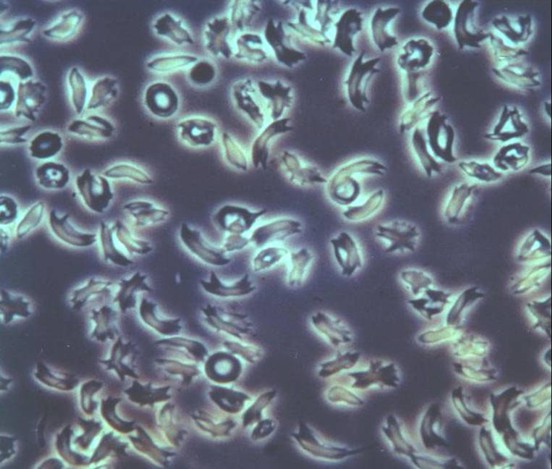 |
|
Red cells from a patient with sickle cells disease, showing transformation in shape upon removal of oxygen. Photo courtesy of G. B. Nash. |
Biorheology has also provided insights into the causes of disease or their diagnosis. Complex analysis of the flow of blood and of mass transfer equations at circulatory bifurcations and in the coronary arteries, larger vessels where blood can be treated as a homogeneous fluid, yielded mechanisms which may explain respectively the formation of aneurysms or the role of hypertension in atherosclerosis and myocardial infarction. In other cases, it is essential to address hemorheology at the level of the individual cell with sickle cell anemia being a commonly cited clinical example. The well-known biochemical defect manifests itself in altered mechanical behavior at the level of the red cell. Biorheologists have also helped elucidate the role of adhesion in leukocytes carrying out their function as part of the body's defense against pathogens. How do white blood cells “know” where to go? An infection of bacteria in tissues leads to the release of factors that cause endothelial cells lining the blood vessel walls to display adhesion molecules. The increased presence of the adhesion molecules results in an interaction between circulating leukocytes and the vessel wall, eventually leading to their migration through a gap between the junctions of the endothelial cells out into the infected tissue. Not only do the local conditions of flow directly influence the physical cell-cell interactions, but they also regulate the expression of genes by the endothelial cells, making the whole ‘inflammatory’ response a model of how physical processes impinge on biological systems.
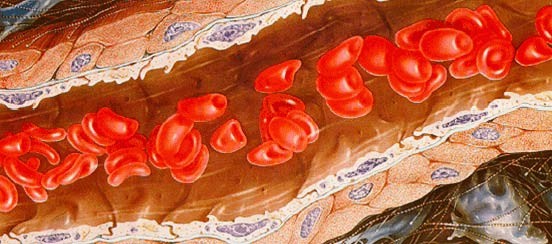 |
|
An illustration of red blood cells flowing in an arteriol. The cells deform to orient themselves to the streamlines to reduce flow resistance. Photo courtesy of O. K. Baskurt. |
The development of artificial organs and other medical devices often requires not only biocompatibility in the usual chemical sense, but also rheological compatibility. Measurement of shear stress levels and assessment of the susceptibility of blood cells to the effects of mechanical trauma were central to the improvement of prosthetic heart valves and the development of a safe implantable artificial heart. Mechanical trauma has also been implicated in cell loss as blood passes through the toroidal rotary seal in a continuous flow cell separator, and may contribute to anemia in patients on hemodialysis.
The International Society of Biorheology promotes cooperation among scientists, engineers and physicians from around the world with an interest in the field of biorheology. ISB is truly international in scope, claiming representation from over 30 different countries, primarily in Europe, North America and Asia.
A major activity of ISB is a triannual International Congress of Biorheology that rotates among the three aforementioned continents. With strong cultural and multidisciplinary technical components, these meetings stand out in what they offer attendees in terms of combined professional satisfaction and personal enjoyment. At the meeting, the Society also commemorates the contributions of Jean-Leonard Marie Poiseuille by honoring a distinguished biorheologist with the Poiseuille Gold Medal. The presentation ceremony and lecture by the recipient is a highlight of each Congress. Recent venues have been Antalya (Turkey), Pécs (Hungary) and Big Sky, Montana with the next meeting scheduled for July 2005 in Chongqing, China, www.icbicch.com.
Many believe that the next major economic cycle in the United States will be tied to biology and medicine. It would seem that the prospects for future work by rheologists in these areas will be good. Readers interested in learning more about ISB can visit www.coe.ou.edu/isb/.
Ten symposia and a poster session will cover topics from biological systems to glassy polymers at the 76th Annual SOR meeting (see listing). Abstracts may be submitted through the Society's web site from late July until October 15, 2004. Abstracts for poster presentations may be submitted through December 10, 2004.
 Invited speakers for Lubbock are David Weitz, Harvard
University USA, Gareth McKinley, Massachusetts Institute of Technology USA,
and Bingham medalist Chris Macosko, from the University of Minnesota USA.
Weitz is an expert in experimental soft condensed matter physics and has
worked on gels and biomaterials among other topics. McKinley is known for
his work on hydrodynamic instabilities and extensional rheometry. Bingham
medalist Macosko (see
profile) is highly regarded for his contributions to the study of
multistructured polymer systems.
Invited speakers for Lubbock are David Weitz, Harvard
University USA, Gareth McKinley, Massachusetts Institute of Technology USA,
and Bingham medalist Chris Macosko, from the University of Minnesota USA.
Weitz is an expert in experimental soft condensed matter physics and has
worked on gels and biomaterials among other topics. McKinley is known for
his work on hydrodynamic instabilities and extensional rheometry. Bingham
medalist Macosko (see
profile) is highly regarded for his contributions to the study of
multistructured polymer systems.
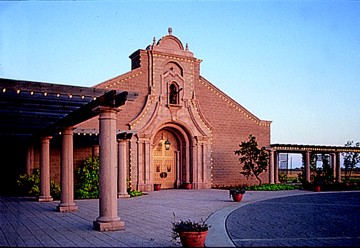 Also in Lubbock two short courses aimed at newcomers to
rheology will be offered. A two-day course “Beginners’ Rheology” will run
12-13 February with instructors Faith Morrison and Jeffrey Giacomin. In
addition, a half-day course on “Rheological Data Analysis and Comparison to
Theory” will be offered on February 13 by Henning Winter. Both courses
assume that participants have minimal knowledge of rheology, with the first
aimed at teaching rheological analysis (standard flows, material functions,
constitutive equations, some rheometry) and the second concentrating on
using software tools for making rheological calculations.
Also in Lubbock two short courses aimed at newcomers to
rheology will be offered. A two-day course “Beginners’ Rheology” will run
12-13 February with instructors Faith Morrison and Jeffrey Giacomin. In
addition, a half-day course on “Rheological Data Analysis and Comparison to
Theory” will be offered on February 13 by Henning Winter. Both courses
assume that participants have minimal knowledge of rheology, with the first
aimed at teaching rheological analysis (standard flows, material functions,
constitutive equations, some rheometry) and the second concentrating on
using software tools for making rheological calculations.
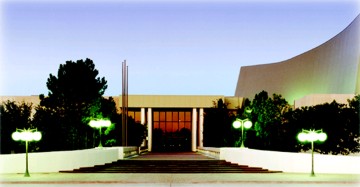 All sessions will be held at the Lubbock Memorial Civic
Center, which is a one-block walk from the conference hotel. The meeting
will begin with a Sunday reception, there will be a Society Luncheon on
Monday, and the Bingham Award will be presented to Macosko at a dinner on
Tuesday evening. The poster session will take place on Wednesday evening.
All sessions will be held at the Lubbock Memorial Civic
Center, which is a one-block walk from the conference hotel. The meeting
will begin with a Sunday reception, there will be a Society Luncheon on
Monday, and the Bingham Award will be presented to Macosko at a dinner on
Tuesday evening. The poster session will take place on Wednesday evening.
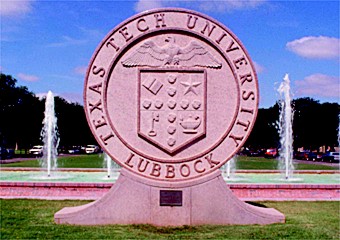 Information about getting to Lubbock appeared in the January
2004 Bulletin and is on the web along with detailed information on the
Lubbock meeting:
www0.rheology.org/sor/info/meeting_announcements.htm.
Information about getting to Lubbock appeared in the January
2004 Bulletin and is on the web along with detailed information on the
Lubbock meeting:
www0.rheology.org/sor/info/meeting_announcements.htm.
Gregory McKenna, Local Arrangements Chair
Dept. of Chemical Eng.
Texas Tech University
P. O. Box 43121
Lubbock, TX 79409-3121
Phone (806) 742-4136
greg.mckenna@coe.ttu.edu
| Program Chair | |
| Wesley R. Burghardt Chemical and Biological Engineering Northwestern University Evanston, IL 60208 Phone: (847) 467-1401 Fax: (847) 491-3728 E-mail: w-burghardt@northwestern.edu |
|
Technical Symposia and Organizers
| 1. Fluid Mechanics and Instability | ||
| Radhakrishna Sureshkumar Chemical Engineering Department Washington University Saint Louis, MO 63130 Phone: 314-935-4988 Fax: 314-935-7211 E-mail: suresh@poly1.che.wustl.edu |
Yong Lak Joo Chemical and Biomolecular Eng. Cornell University, 340 Olin Hall Ithaca, NY 14853 Phone: 607-255-8591 Fax: 607-255-9166 E-mail: YLJ2@cornell.edu |
|
| 2. Suspensions and Colloids | ||
| Jan Vermant Department of Chemical Engineering K.U. Leuven W. De Croylaan 46 B-3001 Leuven, Belgium Phone: +32 16 32 23 55 Fax: +32 16 32 29 91 E-mail: jan.vermant@cit.kuleuven.ac.be |
Dan Klingenberg Chemical & Biological Engineering University of Wisconsin Madison, WI 53706-1691 Phone: 608-262-8932 Fax: 608-262-5434 E-mail: klingen@neep.engr.wisc.edu |
|
| 3. Biological Systems | ||
| Panos Dimitrakopoulos 2113 Chemical Engineering, Bldg 090 University of Maryland College Park, MD 20742-2111 Phone: 301-405-8166 Fax: 301-405-0523 E-mail: dimitrak@eng.umd.edu |
Eric Furst Department of Chemical Engineering University of Delaware Newark, DE 19716 Phone: 302-831-0102 Fax: 302-831-1048 E-mail: furst@che.udel.edu |
|
| 4. Rheology at Microscopic Scale | ||
| Shelley L. Anna Department of Mechanical Engineering Carnegie Mellon University Pittsburgh, PA 15213 Phone: 412-268-6492 Fax: 412-268-3348 E-mail: sanna@cmu.edu |
Anubhav Tripathi Division of Engineering Brown University Providence, RI 02912 Phone: 401-863-3063 Fax: 401-863-9028 Email: Anubhav_Tripathi@brown.edu |
|
| 5. Self-Assembled & Associating Fluids | ||
| Srinivasa R. Raghavan Dept. of Chemical Engineering University of Maryland College Park, MD 20742-2111 Phone: 301-405-8164 Fax: 301-405-0523 E-mail: sraghava@eng.umd.edu |
Yenny Christanti Schlumberger 110 Schlumberger Dr., MD-3 Sugar Land, TX 77478 Phone: 281-285-8112 Fax: 281-285-4212 E-mail: Ychristanti@slb.com |
|
| 6. Dilute Solutions | ||
| Graham M. Harrison Dept. of Chemical Engineering Clemson University Clemson, SC 29634 Phone: 864-656-6399 Fax: 864-656-0784 E-mail: graham.harrison@ces.clemson.edu |
Matteo Pasquali Department of Chemical Engineering, MS-362, Rice University Houston, TX 77251-1892 Phone: 713-348-5830 Fax: 713-348-5478 E-mail: mp@rice.edu |
|
| 7. Multiphase Fluids | ||
| Venkat Ganesan The University of Texas at Austin Department of Chemical Engineering Austin, TX 78712 Phone: 512-471-4856 Fax: 512-471-7060 E-mail: venkat@che.utexas.edu |
Sachin Velenkar Department of Chemical Engineering University of Pittsburgh Pittsburgh, PA 15261 Phone: 412-624-9984 Fax: 412-624-9639 E-mail: velankar@engr.pitt.edu |
|
| 8. Entangled Melts & Solutions | ||
| Lynden A. Archer Chemical and Biomolecular Eng. Cornell University Ithaca, NY 14853-5201 Phone: 607-254-8825 Fax: 607-255-9166 E-mail: laa25@cornell.edu |
Dimitris Vlassopoulos Department of Materials Science & Technology University of Crete P.O.Box 1527, Road to Voutes, Vasilika Vouton 71110 Heraklion, Crete, Greece Phone: 30-2810-391469 Fax: 30-2810-391305 E-mail: dvlasso@iesl.forth.gr |
|
| 9. Experimental Methods | ||
| Anne M. Grillet Multiphase Transport Processes Sandia National Laboratories P.O.Box 5800, MS-0834 Albuquerque, NM 87185-0834 Phone: 505-844-7453 Fax: 505-844-8251 E-mail: amgrill@sandia.gov |
Wesley Burghardt Department of Chemical & Biological Engineering Northwestern University Evanston, IL 60208 Phone: 847-467-1401 Fax: 847-491-3728 E-mail: w-burghardt@northwestern.edu |
|
| 10. 50 Years of WLF: Glassy Polymers & Related Systems | ||
| Sindee Simon Department of Chemical Engineering Texas Tech University Mail Stop 3121 Lubbock, TX 79410 Phone: 806-742-1763 Fax: 806-742-3552 E-mail: Sindee.Simon@coe.ttu.edu |
Ed Quitevis Department of Chemistry Texas Tech University Phone: 806-742-3066 Fax: 806-742-1289 E-mail: Edward.Quitevis@ttu.edu |
|
| 11. Posters | ||
| Patrick T. Mather Dept. Macromolecular Science and Engineering Case Western Reserve University Cleveland, OH 44106-7202 Phone: 216-368-4172 Fax: 425-732-7953 E-mail: patrick.mather@case.edu |
||
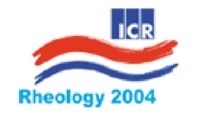 The 14th International Congress on Rheology will take place in Seoul
Korea on August 22-27. Details and registration materials for ICR2004 may be
found on the conference web site www.icr2004.or.kr. Registration fees are US $680 for delegates, US $200
for students and US$350 for accompanying persons.
The 14th International Congress on Rheology will take place in Seoul
Korea on August 22-27. Details and registration materials for ICR2004 may be
found on the conference web site www.icr2004.or.kr. Registration fees are US $680 for delegates, US $200
for students and US$350 for accompanying persons.
The Journal of Rheology will transition to exclusive electronic submission and handling of journal articles over the next 12 months. The change to mandatory electronic submission, adopted by the SOR Executive Committee in April 2004, will reduce the paperwork associated with manuscript handling and is projected to reduce costs at the Journal.
To handle this change, the SOR Exec Com authorized the purchase of PeerX-Press (PXP), software recommended by SOR staff at the American Institute of Physics. The next Editor of the JoR will oversee the transition of the Journal to the new system, which will be optional between January and July 2005, and mandatory after July 2005.
The British Society of Rheology (BSR) has published its second volume of Rheology Reviews, containing 7 substantial reviews of current topics of interest in rheology. RR2004 is edited by David M. Binding and Ken Walters and is available in printed or CD format from the BSR. For more information please visit www.bsr.org.uk.
Malvern Instruments (Bohlin) has introduced a new fixture that enables large solid samples to be tested while immersed within a temperature-controlled liquid. Temperature control is by means a Peltier device, and the manufacturer claims that liquid heat-transfer medium supplies better temperature control compared to forced gas or radiation. Samples of up to 10 by 13 by 50mm may be accommodated and the working temperature range is -15C to 95C depending upon the fluid medium used.
The Coatings Research Institute at Eastern Michigan University offers a variety of short courses throughout the year on subjects related to coating and coating flows. For more information visit www.emich.edu/public/coatings_research/schedule.html.
Nominations for the Society’s highest honor, the Bingham Medal, should be submitted before 15 January 2005 to the chair of the Bingham Award Committee:
William Tuminello
Western Research Institute
365 North 9th Street
Laramie, WY 82072 USA
wtuminel@uwyo.edu
Rules and some guidelines governing the Award are on the web at www0.rheology.org/sor/awards/bingham/nom2004.htm.
Society President Susan Muller has appointed an ad hoc Editor Search Committee chaired by former SOR president and Bingham medalist Kurt Wissbrun to identify a new editor for the Journal of Rheology. Also serving on the search committee are two other Bingham medalists, current past president Bill Russel and Professor Gary Leal of the University of California, Santa Barbara.
The charge to the committee is to recommend an interim editor who will serve out the remainder of Denn’s term as editor, which runs until October 2005. The interim editor will then stand for election in 2005 in accordance with the SOR constitution.
The SOR will hold officer elections in 2005, and the Nominating Committee for those elections will be formed in late Fall 2004. The SOR constitution provides for a three-member nominating committee to report its recommendations at least 145 days prior to the Annual Meeting, approximately 24 May 2005. Members interested in serving on the Nominating Committee should indicate their interest to a member of the SOR Executive Committee. International and industrial members are particularly encouraged to serve.
4-6 August 2004
Nordic Rheology Conference 2004, Reykjavik, Iceland
22-27 August 2004
XIVth International Congress on Rheology, Seoul, Korea
29 August - 1 September 2004
Polymer Processing Society Asia/Australia meeting, Gyeongju, Korea
27-29 September 2004
Polymer Films and Fibers Symposium, Montreal, Quebec, Canada
4-5 October 2004
The 5th International Symposium on Binder Rheology and Pavement Performance,
Baltimore, Maryland, USA
7-10 November 2004
Regional Meeting of the Polymer Processing Society, Florianopolis, Brazil
12-13 February 2005
SOR Short Course on Beginners’ Rheology, by Faith A. Morrison and A.
Jeffrey Giacomin, Lubbock, Texas, USA
13 February 2005
SOR Short Course on Rheological Data Analysis and Comparison to Theory,
by H. Henning Winter, Lubbock, Texas, USA
13-17 February 2005
76th Annual Meeting of The Society of Rheology, Lubbock, Texas, USA
21-23 April 2005
2nd Annual European Rheology Conference AERC 2005, Grenoble, France
30 May - 3 June 2005
12th International Congress of Biorheology (12thICB) and 5th International
Conference on Clinical Hemorheology (5thICCH), Chongqing, China
19-23 June 2005
21st Meeting of the Polymer Processing Society, Leipzig, Germany
26-29 June 2005
13th European Conference on Clinical Hemorheology, Siena, Italy
15-16 October 2005
SOR Short Course on Microrheology, by Michael Solomon and James
Harder, Vancouver, Canada
16-20 October 2005
77th Annual Meeting of The Society of Rheology, Vancouver, Canada
27-29 April 2006
3rd Annual European Rheology Conference AERC 2006, Hersonissos, Crete
7-8 October 2006
SOR Short Course on Rheology (topic TBA), Portland, Maine, USA
8-12 October 2006
78th Annual Meeting of The Society of Rheology, Portland, Maine, USA
Spring 2007
4th Annual European Rheology Conference AERC 2007, location TBA
6-7 October 2007
SOR Short Course on Rheology (topic TBA), Salt Lake City, Utah, USA
7-11 October 2007
79th Annual Meeting of The Society of Rheology, Salt Lake City, Utah, USA
3-8 August 2008
XVth International Congress on Rheology and 80th Annual Meeting of The
Society of Rheology, Monterey, California, USA
October 2009
81st Annual Meeting of The Society of Rheology, Madison, Wisconsin, USA
Christopher W. Macosko has been named the recipient of the 2004 Bingham Medal; see profile. The medal will be awarded at the 76th Meeting of The SOR in Lubbock, TX USA 13-17 February 2005.
Society member John Casola has been named 2003 Person of the Year by The Association of Modified Asphalt Producers (AMAP) in the USA. Casola is Product Sales Manager for asphalts at Malvern Instruments and previously was Director of Technical Services for Bohlin Instruments until its acquisition by Malvern in November 2003.
Rheologist Roy R. (Dick) Miller passed away in March 2004 of pancreatic cancer. Miller held a Ph.D. in chemistry from the University of Chicago and spent most of his career with United Technologies, Chemical Systems Division in San Jose, CA USA. His work on the rheology of solid propellant dispersions with Bob Powell appeared in the JOR in 1991.
The Rheology Bulletin is the news and information publication of The Society of Rheology (SOR), and is published twice a year in January and July. Subscription is free on membership in The Society of Rheology. Society web site: www0.rheology.org/sor/
Change of address or letters to the editor: rheology@aip.org
Dedicated to advancing the science of rheology: the study of deformation and flow of matter
The Society of Rheology was founded in 1929 to foster the study of the mechanical properties of deformable materials.
The SOR is a founding member of the American Institute of Physics.
Visit our web site www0.rheology.org/sor/. Apply for membership online.
[Rheology Bulletin Home Page][Recent Issues]
[/sor/mailto.htm] Updated 19 February 2019 |